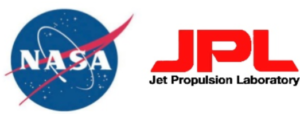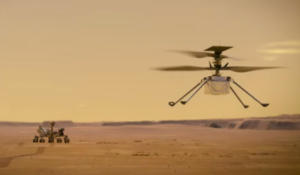September 03 2021

A husband-and-wife team of Iranian-American NASA scientists is working on the much-publicized latest NASA mission to Mars, including its famed helicopter flights.

Dr. Ebadi is a postdoctoral fellow at the Jet Propulsion Laboratory, run by the California Institute of Technology (CALTEC). He has developed localization, navigation and mapping solutions for the Mars helicopter and for the rover mission on the Martian surface.

His wife, Aram Hamidi, is a machine learning and data scientist in the Mission Control Systems section at JPL, whose work is focused on spacecraft anomaly detection and analysis that is, finding what isn’t working right and fixing it.
“As I witnessed our first flight on Mars, I couldn’t stop thinking about the fact that for millions of years, billions of people stared at the night sky and dreamed of traveling to Mars,” Dr. Ebadi posted on Instagram April 19. “I am truly humbled and extremely lucky to be alive in this time in human history, to witness the dream of my ancestors come true, as we rise above the Earth and land on Mars, only to rise again. Ad Astra!”
One of Dr. Ebadi’s most recent tasks at JPL was helping to fly a helicopter on Mars for the first time in history. With no GPS on Mars to help locate a vehicle, the helicopter needs to be able to fly and navigate on its own, capture images, map the terrain, and land safely – all on its own, since it takes so long for radio messages between the Earth and Mars that the helicopter cannot be flown from Earth.
Growing up in Iran, Ebadi was always fascinated with space exploration and dreamed of working at NASA. That dream became a reality 20 years later when, as a NASA Jet Propulsion spokesperson, he found himself commenting on the successful touchdown of the InSight spacecraft on the surface of Mars to a group of VIP guests.
“It was a long journey,” Ebadi told the Santa Clara University School of Engineering’s Journal in January 2019. “But I planned for it, stayed focused, worked hard, and kept getting closer and closer to my dream.”
Ebadi started working at the age of 17 and spent nine years (on night shifts) providing network engineering technical support for different Internet service providers and telecom companies in Iran.
After earning a bachelor’s degree in software engineering in Iran, he was accepted into the master’s program in computer engineering at Florida International University.
He was particularly interested in the work of Dr. Firouz Naderi, a 36-year NASA veteran who at the time was director of Solar System Exploration at the Jet Propulsion Laboratory (JPL). Ebadi contacted him to request a mentoring opportunity. “I sent him 17 emails, to be precise, until he finally agreed to meet with me,” Ebadi said with a laugh.
On Naderi’s recommendation, Ebadi moved to California to be closer to NASA’s JPL for his Ph.D. program at Santa Clara University (SCU). It’s the only university running mission operations for NASA. There, he earned a Ph.D. in Robotic Perception for Multi-Robot Autonomy in 2020.
On his very first day at SCU, at the graduate students’ orientation, a different sort of dream instantly began to take shape. Sitting directly across the table from Ebadi was Aram Hamidi, ’15, a new master’s student in the electrical engineering robotics program. The two immediately hit it off and began dating that day. “At Aram’s graduation, I told her we had been dating for exactly 1,000 days. I said I’d like to start day 1,001 with a new mission, and I got down on one knee and proposed.” Happily, she said yes. The two have been married since 2016.
Before moving to the US, Hamidi had received a Bachelor of Science in electrical engineering in 2012 from Ferdowsi University in Mashhad, and served as a research assistant at Sharif University of Technology.
In the US, she got a Master of Science in electrical engineering degree from Santa Clara University (2014).
Eight years after Ebadi first met Dr. Naderi, he posted a photo of their encounter, and described it as “a turning point in my life. I did not exaggerate.”
“At that time, I was living in Florida. He told me to move to California, so I did, and so I met my wife, the day that I arrived in California. He told me if my goal was to work for NASA, for my Ph.D. I should pursue a degree in robotics and AI, so I did, and so now I work my dream job.“
“I cannot fit all the great lessons that I have learned from him throughout all these years in a short Instagram post. Let’s just stay that an amazing mentor can shape your personal and professional life in ways you cannot imagine.”
On April 16 this year, his wife received NASA JPL’s Discovery Award for her contributions to advancing artificial intelligence and data science technology.
In a post on Instagram on April 23, Kamak Ebadi wrote: “As a scientist and principal investigator, Aram led and developed a novel AI algorithm for real-time fault detection, isolation, and recovery that can be used for monitoring the health of space systems and alerting mission operators of any anomalies that should be addressed before a system fails.”
